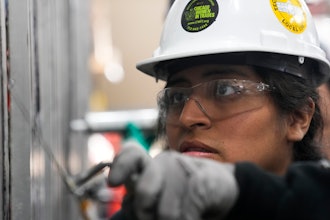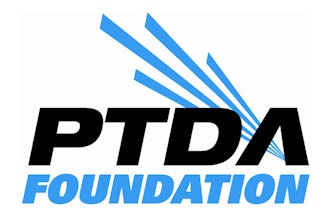
Much has been talked about the perceived talent gap in manufacturing. Data suggests a manufacturing skills gap could result in 2 million unfulfilled jobs by 2025. Others suggest the 'gap' could be a myth, or grossly overstated.
Here's a fact that isn't debatable: the industrial distribution sector is having great difficulty finding the talent it needs to replace retiring baby boomers who comprise a large portion of its workforce. This is especially true for family-owned and smaller distributors, where boomers often make up a majority of headcount.
In Industrial Distribution's recently-completed 2016 Survey of Operations — to be featured in our May/June print and digital editons — more than 39 percent of respondents said they are typically unable to find suitable job applicants for their company, a 4.4 percentage point increase over 2015.
Asked to rate their ability to qualify and recruit, respondents lost some confidence compared to last year. Sixty-two percent rated themselves as good or better, down 7 points from 2015. Thankfully, the amount of respondents who rated themselves as poor has steadily decreased over the years, falling from 7.2 percent in 2014 to 5.7 percent this year.
At the Industrial Supply Association 2016 Annual Convention this past April 16-18 in Rosemont, IL, I had a sit-down interview with ISA President and CEO Jeff Hughes, where we discussed the matter of talent recruitment across the market.
"When you look at the demographics, the industrial supply industry is far behind the aggregated U.S. workforce in making the transitions from boomer-driven businesses to Gen X and Millennial-driven businesses," Hughes said. "I won’t suggest that we’re at a crisis point, but we’re definitely at a tipping point."
Hughes noted that the larger distributors have met this challenge head-on and are having successes, but it's the small-to-medium distributors that have and will continue to suffer most because they don't have the scale or resources to attract enough of the right people.
"I’d hate to see a business go under because a company couldn’t hire the next generation of potential leadership or technicians or sales and marketing people to help perpetuate that firm," Hughes said.
 Jeff Hughes, ISA President and CEO
Jeff Hughes, ISA President and CEOHughes said the key to addressing the industrial distribution talent shortage is that companies develop or enhance a value proposition that aligns with the value set of Millennials (born early 1980s to mid 1990s), and soon that of Gen-Z (born mid-to-late 1990s). It's not a drastically different value set than that of the boomers, Hughes said, but different enough to require distributors to adjust to. Hand-in-hand with adjusting to a Millennial mindset, Hughes said that as the mechanics and technology of the business is changing, so to must the methods for attracting new and younger people into it.
"To me, it's more supply-driven than a demand-driven reality, Hughes said. "The intelligent college student has many choices. Admittedly, by anyone in this room, this is not a sexy job. It’s not Silicon Valley. But when you look at the aggregate that industrial supply does, we are the industry that builds America. That is an incredible mission to think about. You can’t have a concrete building without rebar. Now, rebar itself doesn’t sound that exiting. But that fact that you can build the entire infrastructure of a city is an important message to deliver. It’s really in the messaging,"
The general public has seen how the U.S. has added hundreds of thousands of jobs over the past year as the unemployment rate continues to drop. But there are factors that affect the industrial distribution sector that are different from those that effect the country broadly.
Hughes' overall sentiment wasn't one of panic for the industry, but a stern message of foreboding for distributors to act now to avoid a worse situation as time goes on.
"I won't say there's a malaise out there, but on the other hand I wouldn't say there's cautious optimism. I'd say there's concern," Hughes said. "There’s definitely danger in the water and everybody in the business has to rethink their value proposition and become educated with the value-set of the next generation who will be running this industry, who will be Gen X-ers and Millennials for some time to come.'
Thankfully, there are efforts across the industrial distribution aiming to address these issues and create a steady pipeline of young talent. Hughes estimates that there are well over 200 universities and colleges that provide either a full-blown curriculum to the world of supply chain, though that number is considerably smaller for those who offer programs specifically about industrial distribution. Still, there are many associations aimed to raise awareness of ID careers and their benefits. ISA is one of the top associations in this regard. It is a large supporter of Industrial Careers Pathway, is active with the University of Innovative Distribution and offers online 24/7 courses through the ISA Education Foundation. In addition, ISA's special interest groups — Women Industrial Supply Executives (W.I.S.E.), Emerging Leaders, and Industrial Manufacturers Representative (IMR) — each hold their own annual summit, and had events at the ISA Convention.
"We, as an organization, are extremely committed to professional development and helping this industry bring in the next generation of top talent," Hughes said.






















